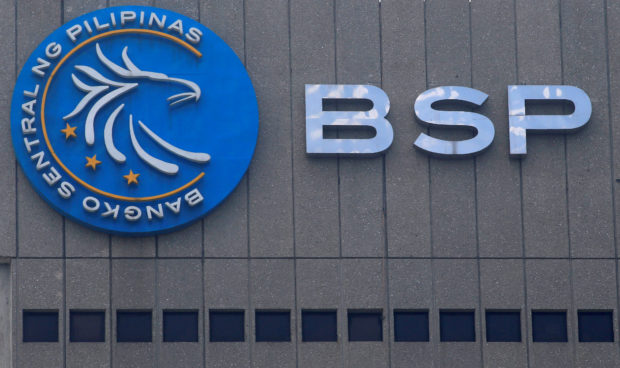
FILE PHOTO: A logo of Bangko Sentral ng Pilipinas (Central Bank of the Philippines) is seen at their main building in Manila, Philippines March 23, 2016. REUTERS/Romeo Ranoco
The country’s balance of payments (BOP) showed a deficit for the eighth month in a row at $572 million in August, though significantly narrower than the $1.8 billion posted in July, as the Philippines’ trade gap reached its widest.
According to the Bangko Sentral ng Pilipinas (BSP), the results for August meant a reversal from a BOP surplus of $1 billion recorded in August 2021.
“The BOP deficit in August 2022 reflected outflows arising mainly from the national government’s foreign currency withdrawals from its deposits with the BSP to settle its foreign currency debt obligations and pay for its various expenditures,” the BSP said in a statement.
The latest data from the Bureau of the Treasury show that the national government’s debt stock as of the end of July amounted to the equivalent of P4.06 trillion.
Trade deficit
End-August BOP brought the eight-month or January-August result to a deficit of $5.5 billion or close to 22 times the $253-million deficit recorded in the same period of 2021.
“Based on preliminary data, this cumulative BOP deficit reflected the widening trade in goods deficit,” the BSP said.
Also, preliminary data from the Philippine Statistics Authority’s latest International Merchandise Trade Statistics (IMTS) report put the country’s deficit in the trade of goods at $35.75 billion—including a monthly record deficit of $5.93 billion in July—67 percent wider than the $21.46-billion trade deficit posted in the same period last year.
GIR decline
Further, the BSP said final figures for the gross international reserves (GIR) as of the end of August showed $97.4 billion. The central bank earlier this month reported a preliminary figure of $98.98 billion.
The GIR decreased for the sixth straight month and sank below the $100-billion mark for the first time since peaking at $110.12 billion in December 2020.
The BSP reiterated that the latest GIR level represents a more than adequate external liquidity buffer equivalent to 7.8 months’ worth of imports of goods and payments of services and primary income.
The GIR is also about seven times the country’s short-term external debt based on original maturity and 4.4 times based on residual maturity. INQ